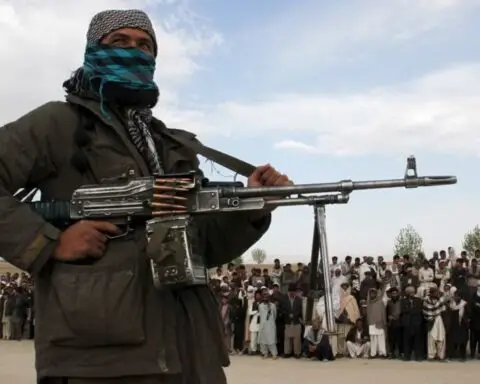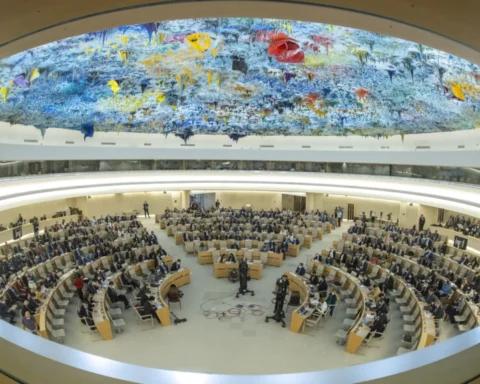Story Highlights:
- In ten hospitals across the province, solar power now supplies reliable electricity for COVID-19 patients, who require functioning critical medical equipment, such as ventilators.
- The uninterrupted power is generated by solar panels installed by Afghanistan’s national power utility, Da Afghanistan Breshna Sherkat (DABS), under the Herat Electrification Project.
HERAT CITY, Herat Province—Since it recorded its first COVID-19 case in February 2020—and incidentally, the first case in Afghanistan—the Herat province has logged the country’s second-highest number of confirmed cases, after Kabul.
The pandemic has overstretched Afghanistan’s healthcare. In Herat, medical facilities have done their best to cope with the influx of patients. But power outages have made it challenging to treat COVID-19 patients, who require electrical ventilators and other respiratory devices to breathe and stay alive.
Herat imports half of its electricity, mainly from its neighbors Iran and Turkmenistan. Power outages are common during the summer and winter months when power usage reaches its peak because of weather extremes.
“Power outages in Herat province have markedly increased over the past years,” says Mohammad Rafiq Sherzai, 37, spokesman for Herat Department of Public Health.
Higher demand has outstripped supply over the past years. Afghanistan’s national power utility Da Afghanistan Breshna Sherkat (DABS), is often unable to meet its customers’ needs, especially during peak periods or when long transmission lines are interrupted.
When the pandemic hit the province, DABS installed solar panels in ten hospitals across Herat to supply emergency power. Financed by the Herat Electrification Project, the solar panels were set up in June 2020. The solar Photo-Voltaic (PV) systems installed in the ten hospitals generate up to 75 kW of energy, providing reliable electricity for critical surgery and essential equipment for COVID-19 patients, such as ventilators, defibrillator, centrifuges, and patient monitoring devices.
“We all know continuous and reliable electricity is a major need in our hospitals, and the solar power system installed in the ten hospitals in Herat will resolve many of our issues,” Sherzai says. “It has created a good and effective working environment for doctors, and they will be able to use essential medical equipment for the treatment of COVID-19 with the help of continuous power.”
“The solar power system has created a good and effective working environment for doctors, and they will be able to use essential medical equipment for the treatment of COVID-19 with the help of continuous power.”Mohammad Rafiq Sherzaispokesman, Herat Department of Public Health

View of Herat’s Shaidayi children’s hospital that was converted into a COVID-19 medical center. With support from the World Bank, the hospital is equipped with solar power panels and 24 hours of power.
DABS / World Bank
Powering Life-Saving Equipment
Herat’s Shaidayi children’s hospital was converted into a COVID-19 medical center to treat the mounting flow of infected people. The majority of COVID-19 patients in tThe hospital has 36 solar panels generating 10kW of energy for the Intensive Care Unit’s (ICU) 14 ventilators and lights.The hospital has 36 solar panels generating 10kW of energy for the Intensive Care Unit’s (ICU) 14 ventilators and lights.
“The main usage of the solar power is in the ICU,” says Abdul Manan Azadmanesh, 42, Director of Shaidayi Hospital. “If equipment such as ventilators stops working due to a power outage, the patients will have difficulty breathing, which can lead to death or serious damage after five minutes. Now that the solar power panels have been installed, we no longer need to rely on the power generator.”
The hospital’s backup generator proved unreliable because of the supply switchover; gaps in the power supply could last for several minutes or longer. “The hospital was using the power generator as a backup alongside the city power,” Azadmanesh explains, “but the power generator also needs maintenance from time to time.”
Solar Energy for Remote Hospitals
The initial success of the solar panels in Shaidayi Hospital and other health facilities has local authorities consider expanding the initiative to remote areas. More than 110 health centers across Herat province and some remote hospitals frequently face power shortages. “Districts far from the city and remote villages face more power outages than the provincial capital, and solar panels could be a big help for the hospitals located in these areas,” says Sherzai.
He also believes that installing solar panels in district hospitals will help in all critical situations. “If people in the remote villages are infected by the coronavirus, we have made sure that hospitals have the resources they need to take care of the patients, and that also includes having access to reliable electricity,” says Sherzai.

Herat province has been the epicenter of COVID-19 in Afghanistan and funds provided by the World Bank has helped the Government better equip medical centers and save lives. Photo Credit: DABS / World Bank
The Obei Hospital, which sits 100 kilometers from Herat city, now has 34 solar panels. Electricity shortages are no longer a problem. “We have received 10 KW of power from the solar panels, and now we are relieved all the hospital departments now have power,” says Nasir Ahmad Tokhi, 35, Head of Obei Hospital. “We used to spend days without electricity. The operating room and ICU of the hospital faced electricity shortages daily and during the day and night everywhere was dark.”
The Herat Electrification Project aims to provide access to electricity to households, institutions, and businesses in selected areas of Herat province. The project began in June 2017 and will continue through January 2022. It is supported by the International Development Association (IDA), the World Bank Group’s fund for the poorest countries.
*U.S. dollar equivalent is based on the exchange rate 1 USD = 76.83 afghanis (September 2020)






